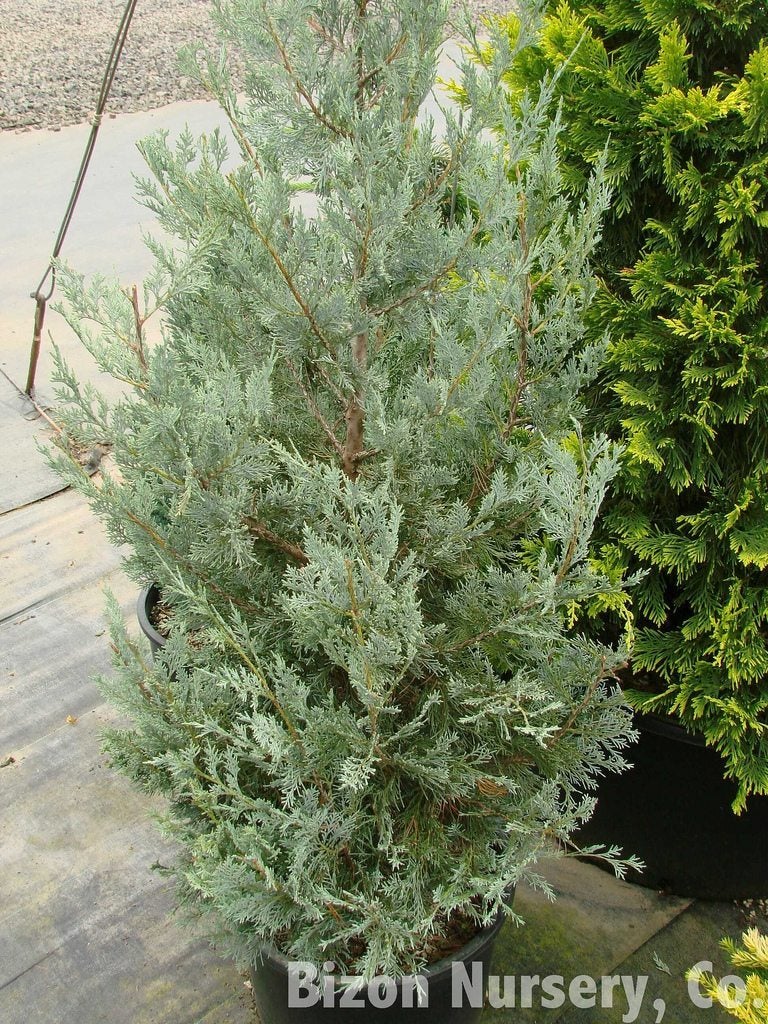Wichita Blue Juniper Care: Tips For Growing Wichita Blue Junipers


Wichita Blue juniper trees have an attractive broad-pyramid form that works well in a screen or hedge. With gorgeous silver blue foliage all year long, these cultivars turn heads wherever they are planted. For more Wichita Blue juniper information, including tips on where to grow Wichita Blue juniper, read on.
Wichita Blue Juniper Information
Wichita Blue juniper trees (Juniperus scopulorum 'Wichita Blue') are a cultivar of the tree called Rocky Mountain juniper or Colorado red cedar, native to the Rocky Mountains. The species tree can grow to 50 feet (15 m.) tall and 20 feet (6 m.) wide. If you like the look of a Rocky Mountain juniper but have a small garden, Wichita Blue is a good alternative, as this cultivar grows slowly to about 15 feet (5 m.) tall, although it can grow somewhat taller over time. Wichita Blue juniper trees have attractive blue or silvery blue foliage. The color remains true all year long. Another advantage of growing Wichita Blue junipers is the fact that they are all male. This means that you don’t have berries releasing seeds in your yard. That makes Wichita Blue juniper tree care easier.
Where to Grow Wichita Blue Juniper
If you want to start growing Wichita Blue junipers, you’ll be happy to learn that their hardiness range is the same as the species plant. They thrive anywhere in USDA plant hardiness zones 3 through 7. When you start growing Wichita Blue junipers, site them in a location that gets direct sun. These trees need at least six hours a day of sun to thrive. In order to minimize Wichita Blue juniper care, plant these trees in sandy soil. Excellent drainage is key for junipers and wet soils will kill the plants. That doesn’t mean that Wichita Blue juniper care doesn’t include irrigation. When planting Wichita Blue junipers, you’ll need to water them thoroughly during the first few growing seasons in order to help them establish a deep and extensive root system. Once Wichita Blue trees are established, they are waterwise. You’ll only need to water occasionally. In terms of feeding, don’t overdo it. You can work in organic compost or apply a general-purpose fertilizer. Do this in spring before new growth begins.
Sign up for the Gardening Know How newsletter today and receive a free copy of our e-book "How to Grow Delicious Tomatoes".

Teo Spengler is a master gardener and a docent at the San Francisco Botanical Garden, where she hosts public tours. She has studied horticulture and written about nature, trees, plants, and gardening for more than two decades, following a career as an attorney and legal writer. Her extended family includes some 30 houseplants and hundreds of outdoor plants, including 250 trees, which are her main passion. Spengler currently splits her life between San Francisco and the French Basque Country, though she was raised in Alaska, giving her experience of gardening in a range of climates.